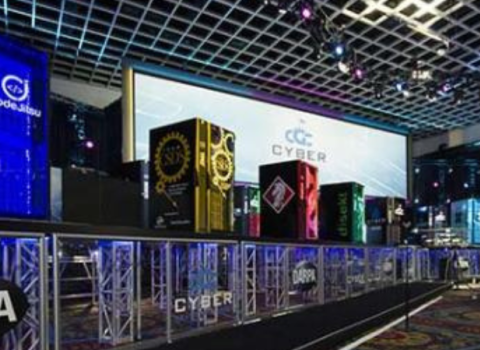The project, to be launched under the international ‘Mission Innovation’ initiative at COP26 in Glasgow this November, will be open to European scientists

Elizabeth Urbanas, the US Energy Department’s acting assistant secretary for international affairs. Photo: Institute of the Americas
The US is planning a research programme to take carbon capture and storage to the next level by removing CO2 directly from the atmosphere and will open the project up to European scientists, a Department of Energy (DOE) official said on Tuesday.
Elizabeth Urbanas, DOE acting assistant secretary for international affairs, said the department wants to use November’s COP26 climate change conference in Glasgow to launch the new project as part of Mission Innovation, an international climate R&D initiative set up by Bill Gates at COP21 in 2015. The EU and the US are both founding members of Mission Innovation, as are the UK, Canada, China, Japan and several others.
The project will be an “innovation challenge,” setting targets for research institutions and labs around the world to work towards, said Urbanas. “This is a technology that’s been worked on in the United States, but it’s also being worked on in Europe and other parts of the world.” It involves “capturing carbon dioxide out of the air around us and storing it,” rather than extracting the gas at source from major emitters, such as cement factories, steel works, or coal fired power stations.
“There is a general interest, not only from the perspective of addressing climate change,” but also as a technology with commercial potential, Urbanas said.
Urbanas described the idea at a Science|Business event on global climate and energy R&D, held shortly after the EU/US summit in Brussels the same day.
Mission Innovation is “a group of 22 countries, representing something like 95% of the global research and innovation in clean energy,” said Patrick Child, the initiative’s chairman and deputy director general of the European Commission’s research and innovation policy department.
Urbanas said the initiative, “Issues challenges and specific work streams for countries to work together.” This will be on a voluntary basis, with countries choosing what to work on. All of the missions are essentially about “advanced technologies in green energy and approaches to climate,” Urbanas said.
Child said Mission Innovation’s members are hoping to have several other new challenges ready for COP26, including hydrogen power and clean shipping.
Fusion energy within the decade?
A more radical clean energy technology being funded jointly by the EU, the US, China and several others is the International Thermonuclear Experimental Reactor (ITER). ITER was founded in 2007 - though governments began working intensively on nuclear fusion research in the 1950s, after a hoax convinced the world that Juan Perón’s Argentina had got there first.
The ITER project today is so ambitious that there’s no consensus on its overall costs: the DOE’s 2018 estimate, disputed by the ITER organisation itself, stood at $65 billion.
An audience member asked whether, after so much time and money spent, it might be time for an “audit” of fusion energy, saying, “We’ve been doing this for 70 years, and we’re still waiting.”
But Don Beyer, Democratic congressman for Virginia’s 8th District, remains bullish about fusion energy and ITER, which he said is moving “slowly, but surely.” It’s important to “get people out of the idea that fusion is always going to be 50 years or 25 years away,” said Beyer. “We can do it in this decade if we focus on it, if we make it a priority.”
The astonishing speed of COVID-19 vaccine development is an example of what’s possible, Beyer said. “We just came up with vaccines for this deadly pandemic in about two months, and we had them in people’s arms in ten months. We shortened that period by 90%.”
Another psychological obstacle to be overcome is fear about safety. “I think the first thing that MIT physicists taught me is not to say ‘nuclear’ fusion, because it raises Fukushima, Chernobyl, Three Mile Island,” Beyer noted.
Unlike nuclear fission plants, “when a fusion plant stops working, it just stops working; there’s no explosive potential there. And from a nuclear waste standpoint, you have a beam of neutrons and that’s about all,” said Beyer. “When there’s no radioactive residue and your raw material is rock and saltwater, and you can do it in urban settings, it’s the holy grail.”
Child agreed, saying, “Even if it will not come in time for us to save the planet from climate change, which used to be the main argument for fusion, it is such a major game changer if we can get it right.” Though he added that COVID-19 vaccine development benefited from the fact there were already working vaccines for similar illnesses, whereas with fusion, “We haven't yet got the demonstration even on a small scale that it works. But we’re working on it.”
The politics of climate R&D
Climate change has long been a controversial topic in American politics, but Beyer said that despite the extreme partisanship in Congress, some room for agreement has grown. “When I joined the Science Committee seven years ago, virtually every Republican on the Science Committee thought that climate change wasn't real, or if it was real, it wasn't caused by humans, or if humans did cause it there was nothing you could do about it,” he said. But in a recent hearing of the Ways and Means Committee, “Every Republican on the committee said this is real and we have to do something about it,” he said.
While getting cross party support for climate regulations is hard, Beyer said there is strong bipartisan support for research and innovation. “My Republican pals would prefer that we only did innovation to get out of it [climate change], and we’re probably going to need a mix [of innovation and regulation].”
Child said that EU/US collaboration on climate R&D continued throughout the Trump years. “Notwithstanding the political orientations of the previous administration, we were still working very hard with many different interlocutors in the United States, whether at the level of individual states or industry, [or] the scientific community.”
Similarly, “Every year we get over 15,000 European scientists visiting Department of Energy national laboratories,” said Urbanas. A good example of transatlantic research cooperation taking place within the US is the Deep Underground Neutrino Experiment (DUNE). This, the largest international science experiment attempted in the US, is jointly led by Manchester University.
DUNE aims to improve scientific understanding of neutrinos, subatomic particles that barely interact with other particles, and tend to pass through solid matter unimpeded.





 A unique international forum for public research organisations and companies to connect their external engagement with strategic interests around their R&D system.
A unique international forum for public research organisations and companies to connect their external engagement with strategic interests around their R&D system.